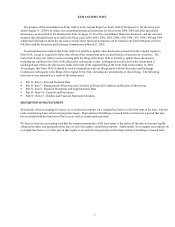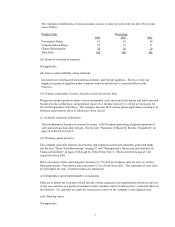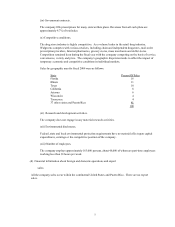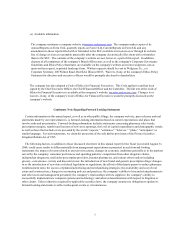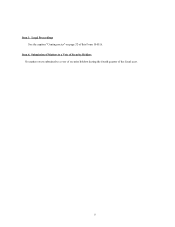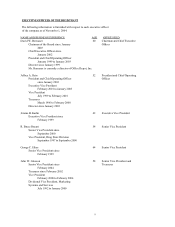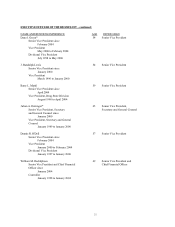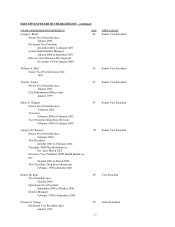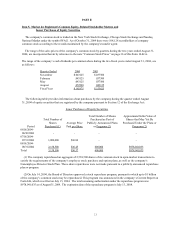Walgreens 2004 Annual Report Download - page 4
Download and view the complete annual report
Please find page 4 of the 2004 Walgreens annual report below. You can navigate through the pages in the report by either clicking on the pages listed below, or by using the keyword search tool below to find specific information within the annual report.
4
The estimated contributions of various product classes to sales for each of the last three fiscal years
are as follows:
Product Class Percentage
2004 2003 2002
Prescription Drugs 63 62 60
Nonprescription Drugs 12 12 11
General Merchandise 25 26 29
Total Sales 100 100 100
(ii) Status of a product or segment.
Not applicable.
(iii) Sources and availability of raw materials.
Inventories are purchased from numerous domestic and foreign suppliers. The loss of any one
supplier or group of suppliers under common control would not have a material effect on the
business.
(iv) Patents, trademarks, licenses, franchises and concessions held.
Walgreens markets products under various trademarks, trade dress and trade names and holds assorted
business licenses (pharmacy, occupational, liquor, etc.) having various lives, which are necessary for
the normal operation of business. The company also has filed various patent applications relating to its
business and products, three of which have been issued.
(v) Seasonal variations in business.
The non-pharmacy business is seasonal in nature, with Christmas generating a higher proportion of
sales and earnings than other periods. See the note “Summary of Quarterly Results (Unaudited)” on
page 36 of this Form 10-K/A.
(vi) Working capital practices.
The company generally finances its inventory and expansion needs with internally generated funds.
See the note "Short-Term Borrowings" on page 31 and "Management's Discussion and Analysis of
Financial Condition" on pages 16 through 21 of this Form 10-K/A. Short-term borrowings are not
expected in fiscal 2005.
Due to the nature of the retail drugstore business 91.7% of all prescription sales are now covered by
third party payors. Prescription sales represent 63.2% of total store sales. The remainder of store sales
are principally for cash. Customer returns are immaterial.
(vii) Dependence upon limited number of customers.
Sales are to numerous customers which include various managed care organizations; therefore, the loss
of any one customer or a group of customers under common control would not have a material effect on
the business. No customer accounts for ten percent or more of the company's consolidated sales.
(viii) Backlog orders.
Not applicable.


